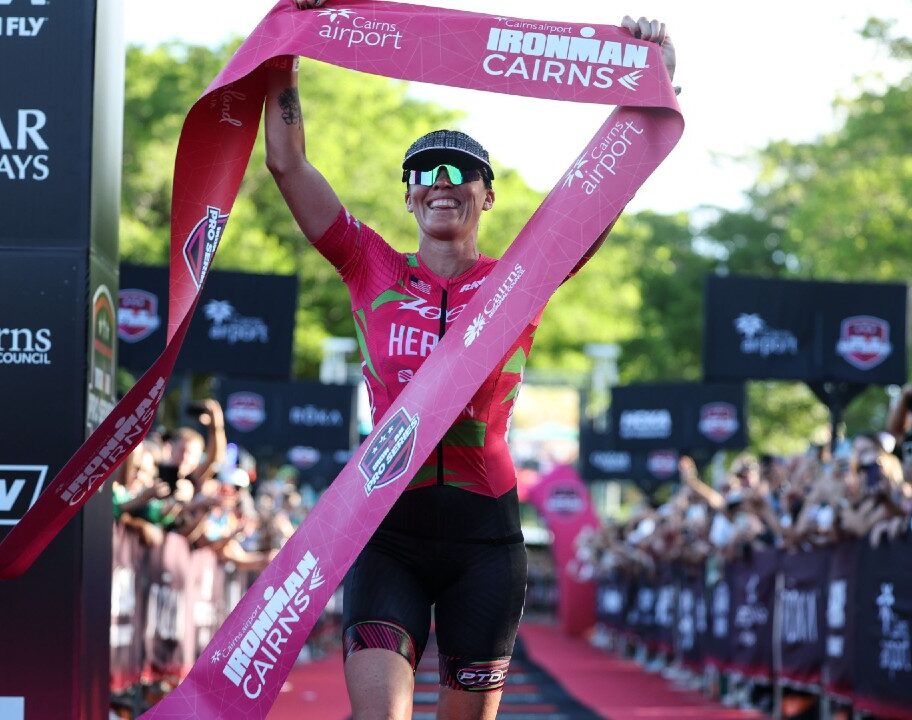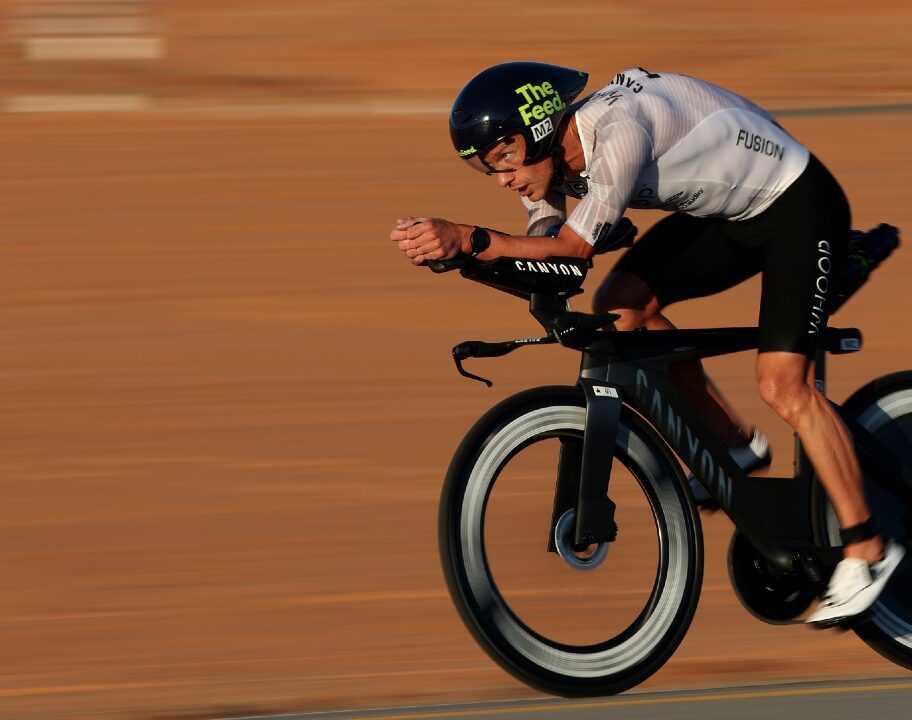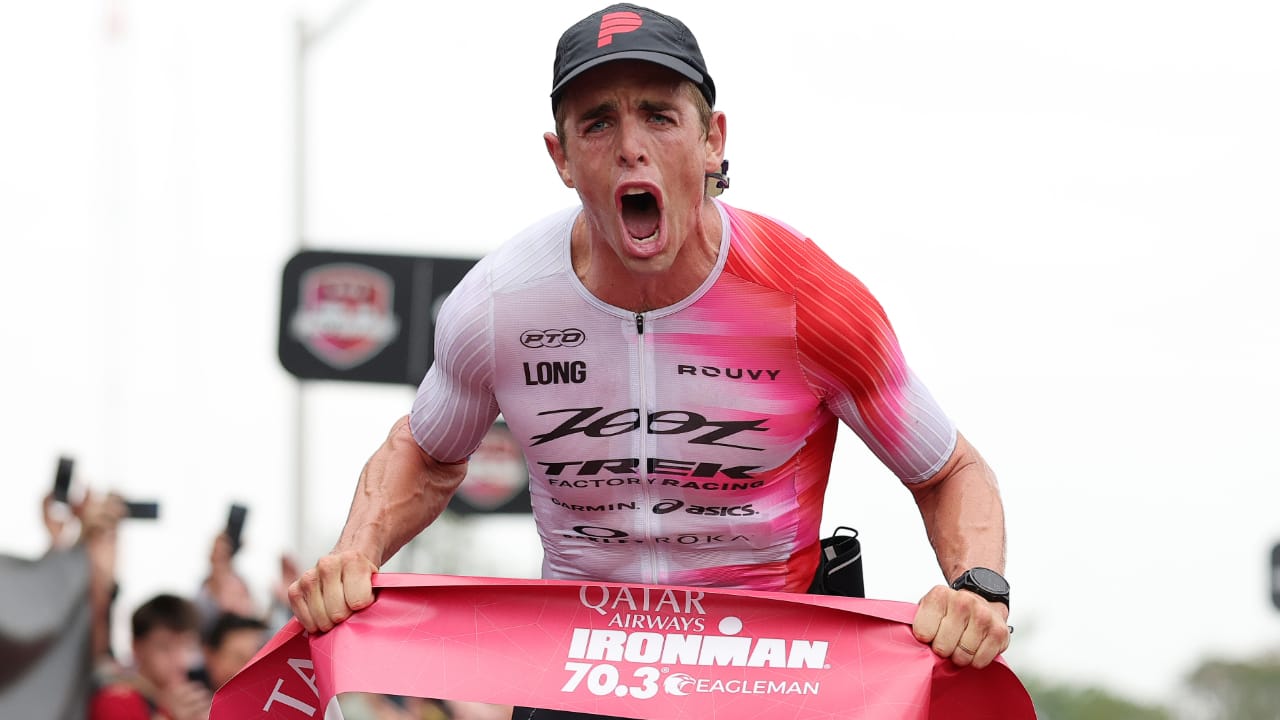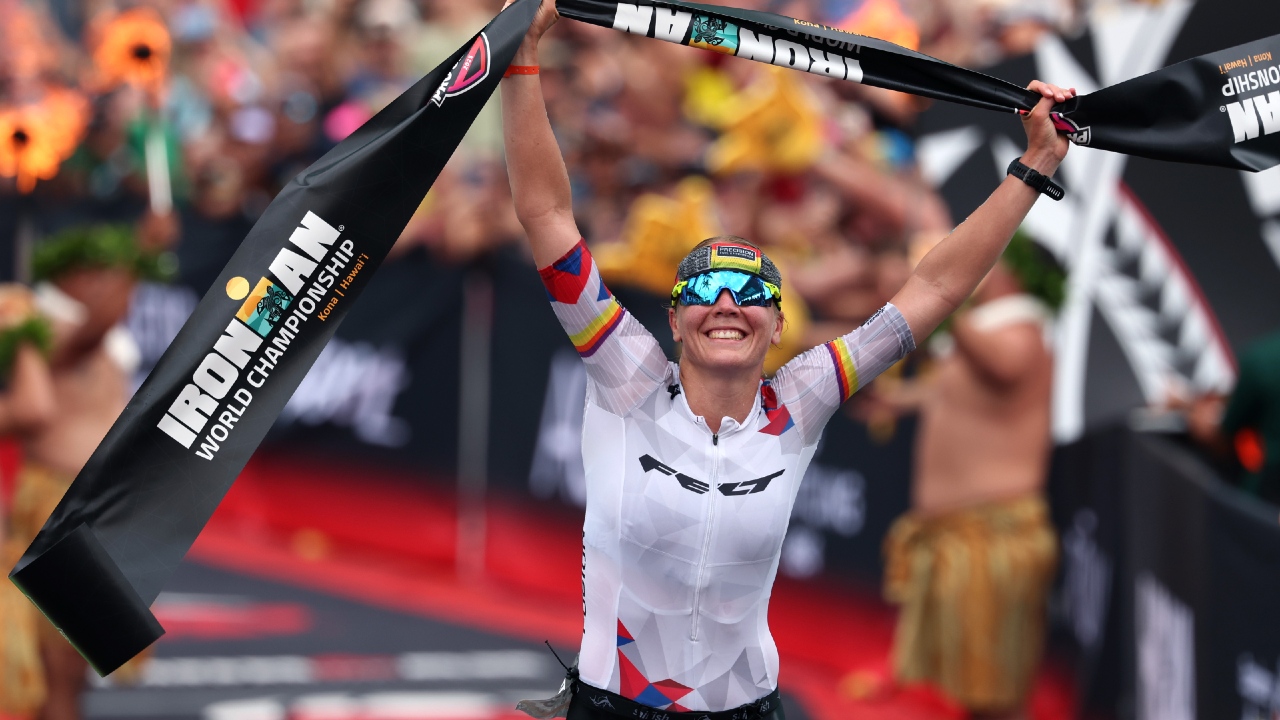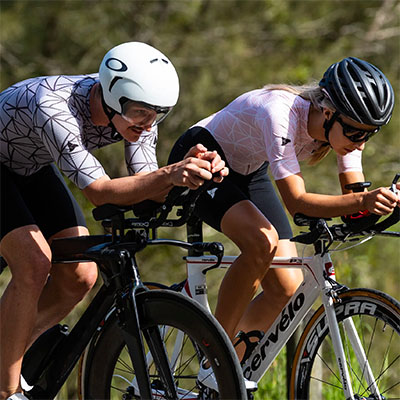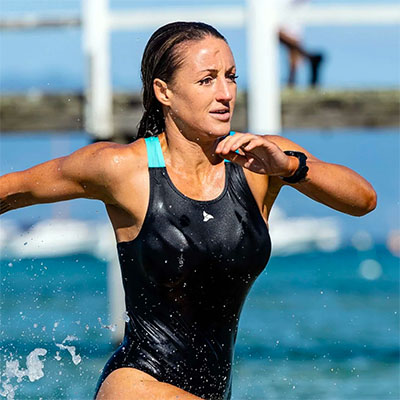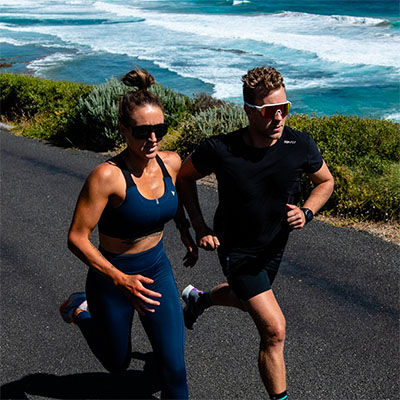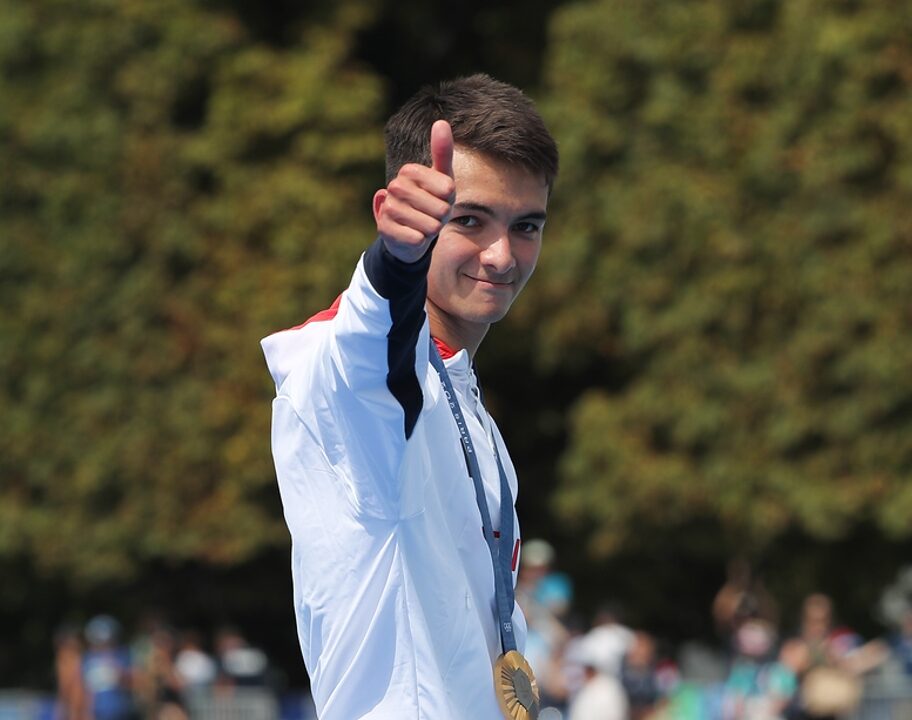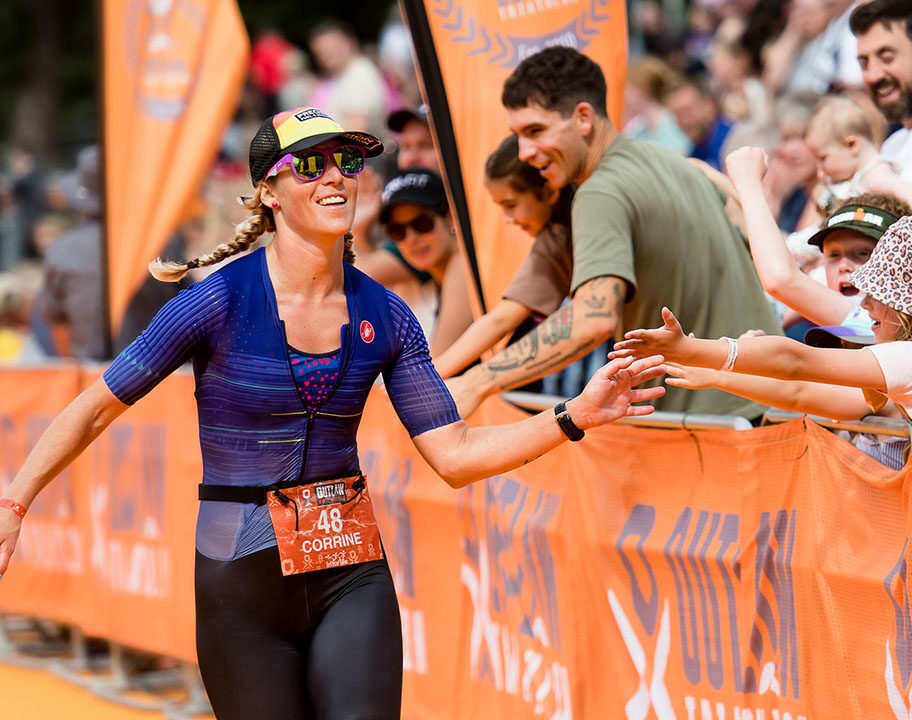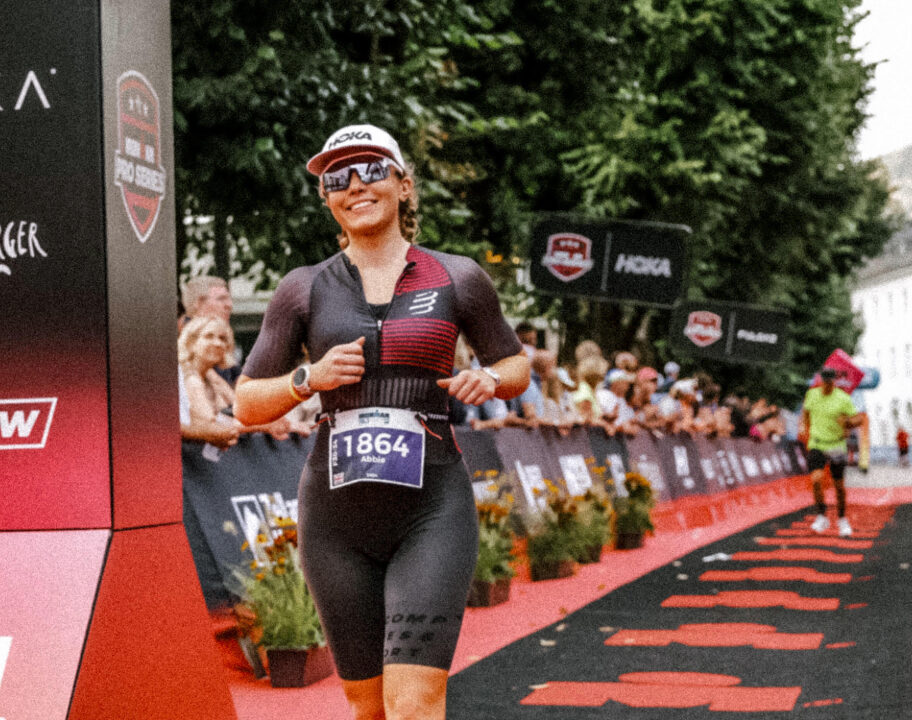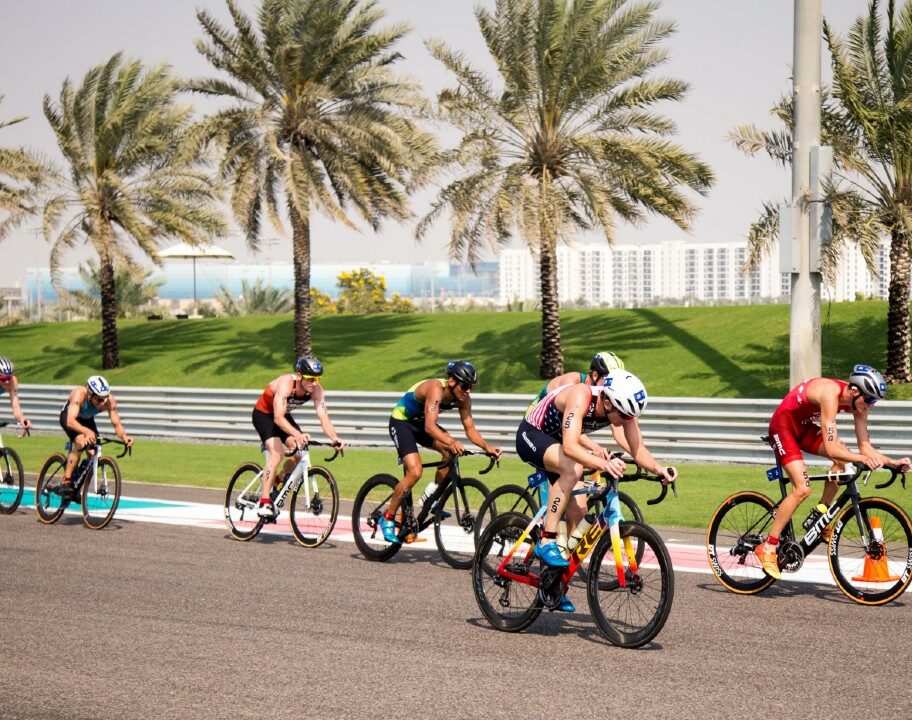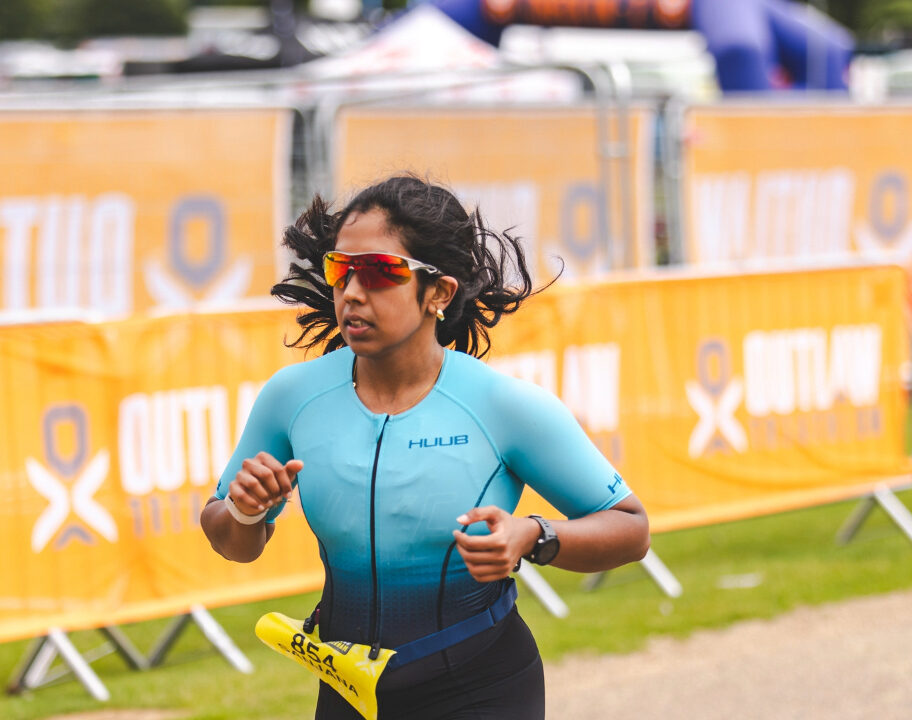The world of triathlon is certainly not short on scientific options to try and help us improve performance. Whether that’s carbon-plated running shoes, aerodynamic bike sensors, wearable fitness trackers, insoles that analyse running technique or blood glucose measurement devices – plenty of technology has been applied in search of your attention.
Not all ‘gadgets’ are visible however, notably with brands developing software and applications that may differentiate them from the rest of the market. Alongside the physical hardware of its smart bike range, Wattbike users can also access a tool called Pedalling Effectiveness Score (PES) as part of their training.
Improve pedalling effectiveness to enhance your cycling
Getting faster. Going longer. Making it easier. Whatever your own cycling goals are, more often than not, we all want to be ‘better’. For some better is winning races, for the rest of us… perhaps our goals are more modest in absolute terms, but that doesn’t mean we can’t progress. How can the application of science help?
Better / faster / more efficient – how can we measure those?
There are plenty of approaches to these questions, in a large part due to developments in technology making adoption of what might previously have been considered laboratory measurements, readily available to the consumer (that’s us…), in relatively simple to use and affordable formats.
One of the measures that Wattbike has developed and is available for its award-winning Wattbike Atom smart bike is called Pedalling Effectiveness Score (PES). You can see your PES – in realtime – when using a Wattbike in conjunction with the Wattbike Hub application.
From the original Wattbike (Pro/Trainer) models, Wattbike have always had ‘that funny graph thing’, which they called their Polar View. As they produce vast amounts of data per second, the Polar View was a way to visually represent ‘how’ you are cycling in real time. Thus, not simply ‘X’ number of watts of power, but where in the pedal stroke that power is applied, balance between left and right legs, where the peak force is applied, how that ebbs and flows through a pedal stroke – and then convert that data into a visual representation to give instant feedback on how an individual pedals.
The key output of Polar View being a graphical representation which was often characterised as The Figure of Eight, The Peanut or The Sausage. Quirky names aside – and having had the original Wattbike for many years myself, I had some direct experience – these could give a great insight into identifying potential issues (and thus, potential solutions) to the efficiency, or not, of your pedal stroke.
The next step
Pedalling Effectiveness Score is really a progression of the Polar View model.
“After measuring your net force and predicting your gross force, the Wattbike Hub shows your Pedal Effectiveness Score alongside a sliding scale for each leg. The colour-coded breakdown acts as a guide, with the aim of staying within green for the most effective use of power.“
By applying a real-time score (value), PES further improves on the insights of the Polar View, as not only will you see a graphical representation, but also a direct numerical output. In other words, you can focus on cycling and let the technology do the thinking and interpretation for you. All in real-time. If you struggle to breath, let alone interpret a graph during another V02 Max interval, quite useful.
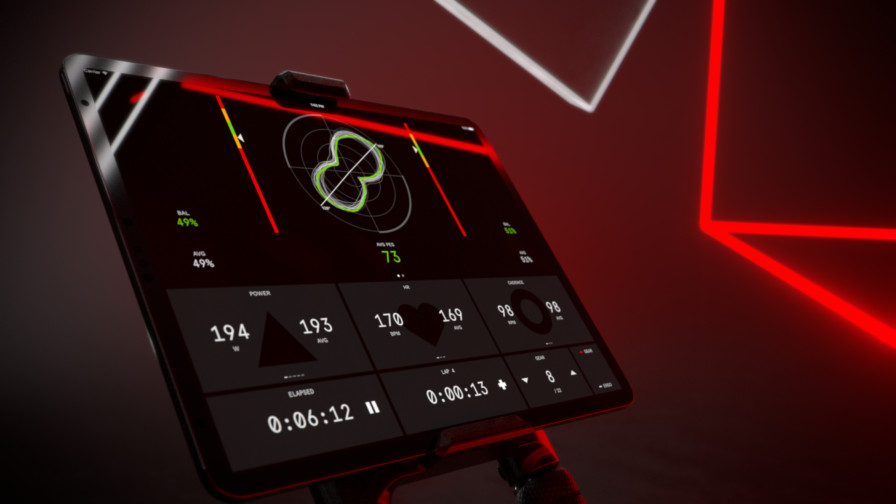
I’m sure many of you will have been increasingly familiar with the importance and impact of aerodynamics, bike fit, clothing and the like on cycling speeds in recent years. There is perhaps a similar thought process to efficiency here – being more effective in how you pedal can be another avenue of improvement, above “get fitter/stronger”.
Matt Bottrill has been one of those athletes and now coaches, that have helped many people improve their understanding of aerodynamics in recent years. He has an interesting take on the importance of being efficient in your cycling:
“A lot of people are as aero as they can get and it’s taken a few years. But I think from now it’s going to be training and efficiency that you’ve got to work on. If everyone’s got the CdA, what do you do? Get more efficient.”
In swimming we would rarely not work on technique – thus, it seems logical that it should be part of our approach to cycling too, right?
Understanding efficient pedalling
In-depth research lead us to identify and optimal Pedalling Effectiveness Score of 70-80. So, how do you achieve this score and what is the optimal pedalling technique?
To answer this question, we need to break down the pedal stroke into four key phases, with a different focus placed on each one. When executed well, each phase merges into the the next, creating a powerful and efficient pedalling style:
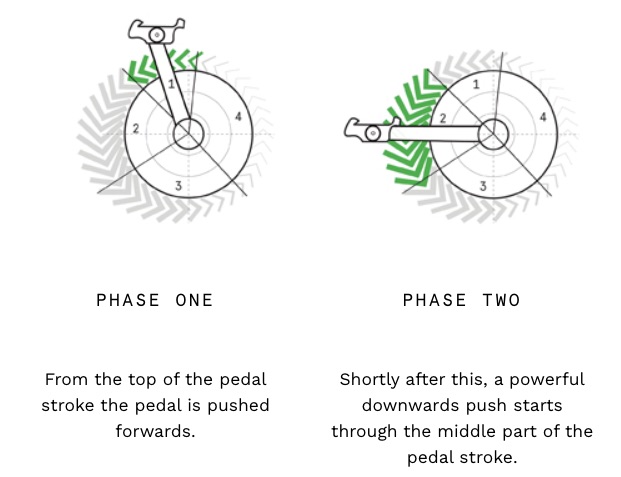
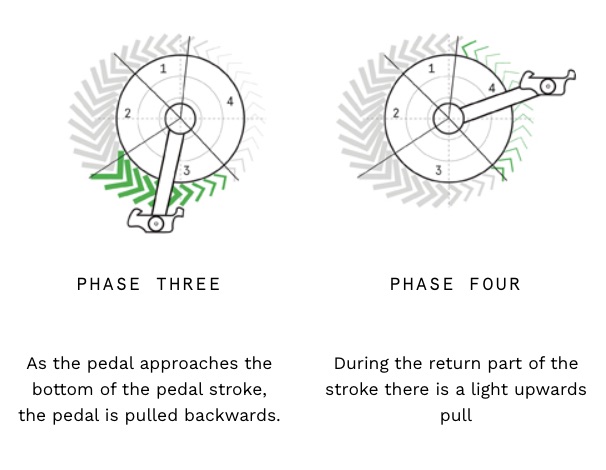
Putting it into practice
Ok, so those are the basics of what it is, but let’s get a bit more specific on how you can actually use PES and the Polar View to improve your cycling and, ultimately, get faster too.
Here are three classic examples – and more importantly, how to improve on them:
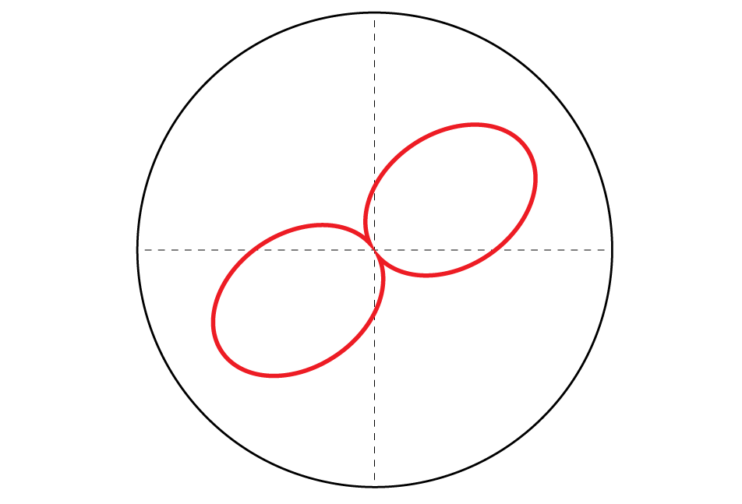
FOUNDATION: Shows very little carry over in force from one leg to another = hamstrings not being used
Coaching Points:
- Consciously try and use the hamstrings to pull backwards at the bottom of the pedal stroke, rather than thinking about pressing on the pedals. Imagine trying to scrape mud off the sole of your shoe
- Encourage the rider to make a big effort here as quite a lot can be gained in a short space of time in terms of results
- Less balanced = Less mechanically effective and physiologically inefficient (less power for the effort put in)

DEVELOPMENTAL: shows some carry over in force from one leg to the next = some hamstring muscle activation
Coaching Points:
- Encourage the rider to keep pulling backwards and scraping mud off the shoe to maximise their pedalling effectiveness
- A little more effort here will make a positive difference in their ability to produce power more effectively
- Emphasise the feeling of engaging the hamstrings at the bottom of the pedal stroke
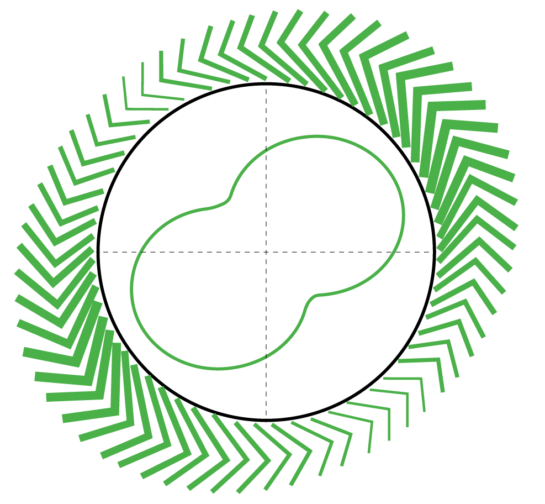
OPTIMAL: shows ideal leg muscle symmetry = using hamstrings and calves in effective coordination with quads and glutes
Coaching Points:
- Encourage an even left-right leg split and work on maintaining a 50/50% split
- Rider shows they are symmetrical in their muscle recruitment
- More balanced = more mechanically effective and physiologically efficient (more power for same effort)
The Athlete View
I asked Kate Allan for more insight on how and when she finds the PES element of Wattbike’s data output valuable.
“Cycling is so much more than just simply pedalling hard, and what PES offers me is the opportunity to really drill down the specifics of my stroke, to make me as efficient a cyclist as possible.
“It makes complete sense; if your pedalling action is not efficient, you have poor technique, and are not putting down your max power at the optimum point, how can you expect to get the very most out of each revolution? You’ll expend more energy than you need to and will tire more easily, especially on long endurance rides. It will also invariably be more challenging to hold your optimum power output in competition.
“Personally, I rely on data quite heavily with my training and find the polar view ‘peanut’ incredibly useful with it being so visual. I frequently check my ‘left right’ leg balance (represented as %), and also keep tabs of the polar view ‘peanut’ which visually represents what is happening in your stroke, as well as my PES score itself.
“An optimal PES score is between 70-80 – when I started tracking my PES I was averaging somewhere around 48-49, I now hover around 59-60. So by all means there is still huge scope for improvement, but by working on this I’ve made gradual changes. So much so, that it’s transformed my natural pedalling technique – which will translate to my cycling away from the Wattbike, in my training outdoors and most significantly when I am racing.”


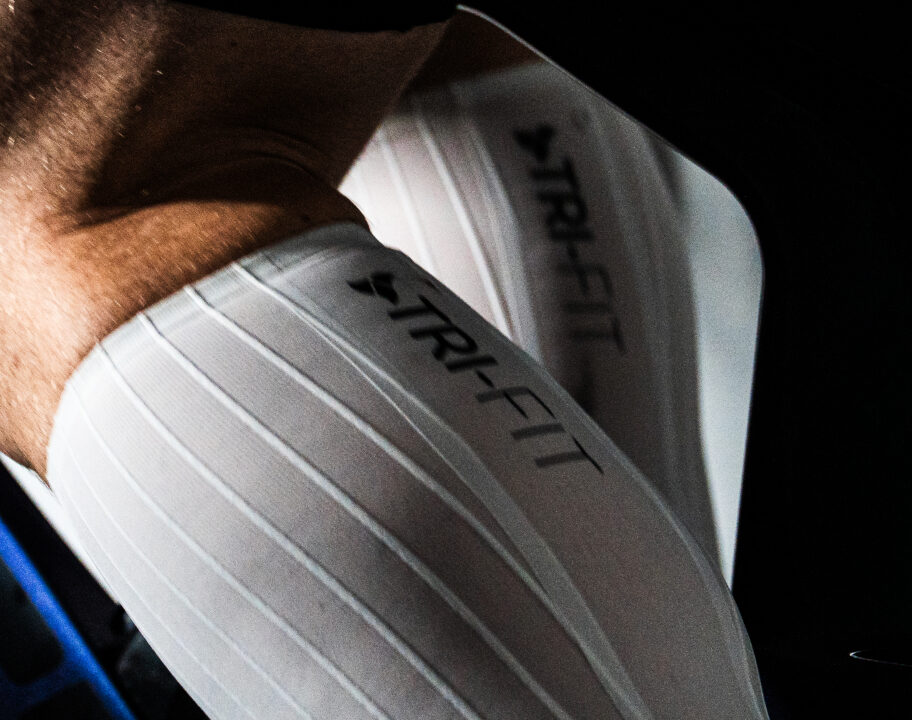

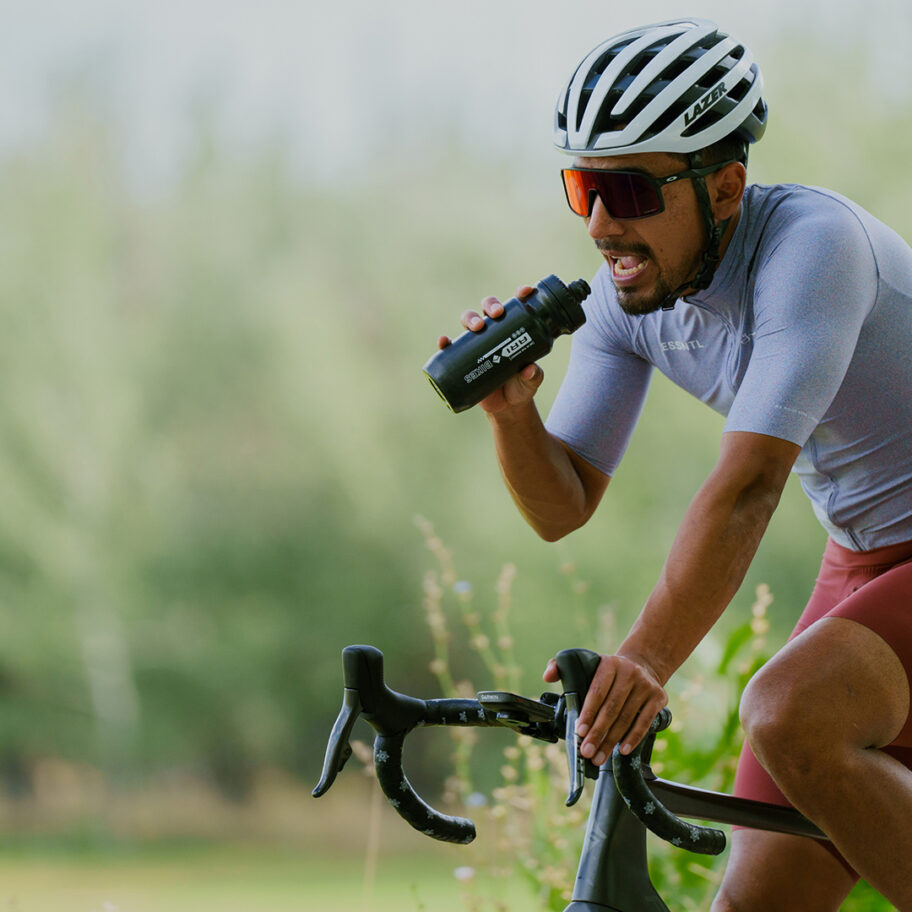
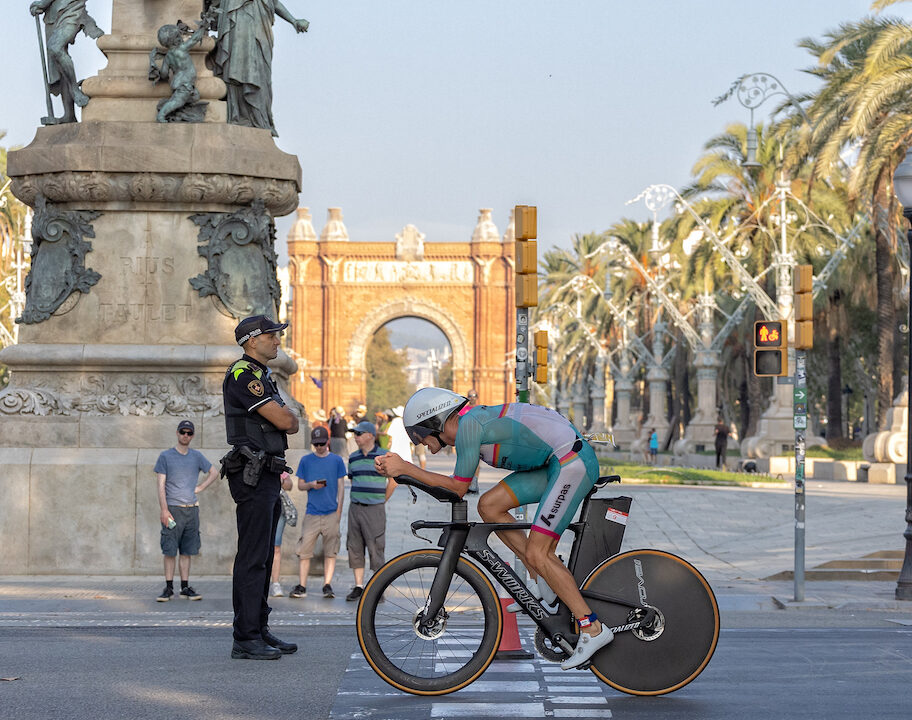
![Caroline Livesey wins the first ever Scottish National Gravel Championships in August 2025. [Photo credit: Outsider Events]](https://www.tri247.com/wp-content/uploads/2025/11/Caroline-Livesey-scots-national1.jpg)
